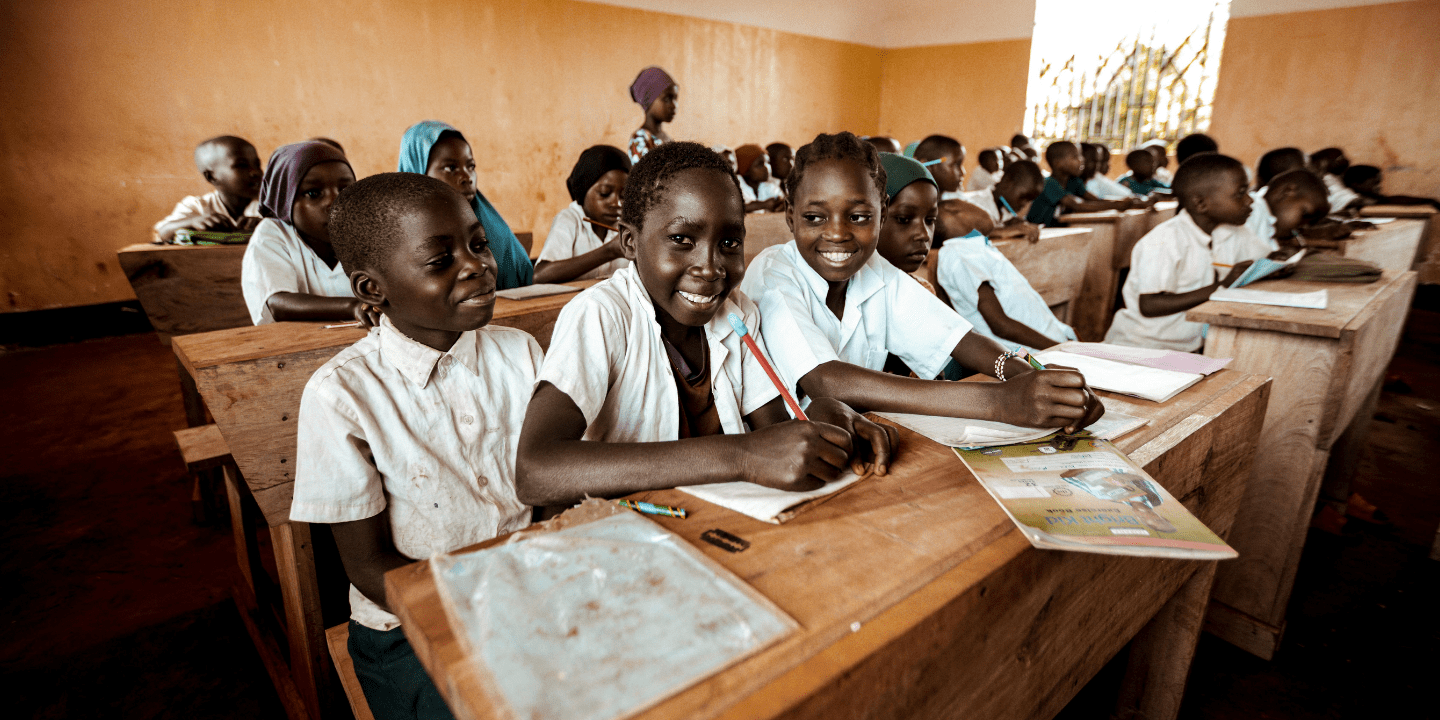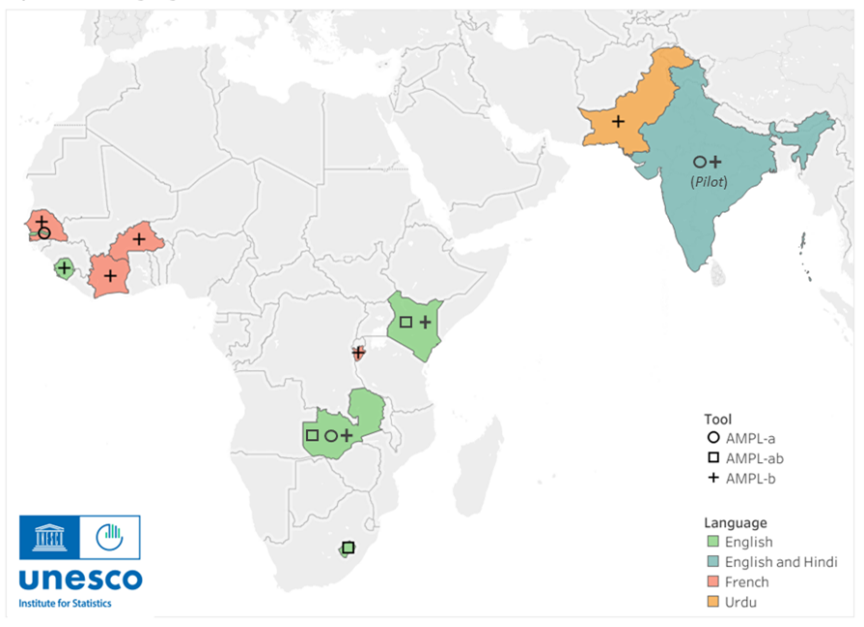
A new tool to fill the data gap on learning: AMPL
Research 21 Feb 2024 7 minute readNew tool enables countries to report the proportion of children and young people reaching the global minimum proficiency levels in reading and mathematics.
Monitoring the extent to which education systems are meeting the UN Sustainable Development Goals in education (SDG 4) is an essential part of their achievement. To support countries in monitoring learning progress towards achieving SDG 4, the UNESCO Institute for Statistics (UIS), in partnership with the Australian Council for Educational Research (ACER) and funded by the Bill & Melinda Gates Foundation, has developed a new tool: the Assessment for Minimum Proficiency Levels (AMPL).
The objective of AMPL is to enable countries to produce and report on SDG indicators 4.1.1a and 4.1.1b. Its comparative advantage over other assessments is its cost- and time-effectiveness.
AMPL has been developed in 2 phases
AMPL was initially developed in 2021, as part of the Monitoring Impact on Learning Outcomes (MILO) project, to be administered in English and French at the end of primary education (AMPL-b) in 6 sub-Saharan African countries (Burundi, Burkina Faso, Cote d’Ivoire, Kenya, Senegal and Zambia). Its successful implementation in the middle of the COVID-19 crisis proved that measuring learning could be done in a cost-effective affordable way.
In 2022, AMPL was administered in Sierra Leone and, following its translation into Urdu, in 2 provinces of Pakistan (Khyber Pakhtunkhwa and Islamabad Capital Territory) by the World Bank.
In 2023, a new module to assess learning at the end of lower primary (AMPL-a) was developed and administered in The Gambia and Zambia. Kenya, Lesotho and Zambia administered AMPL-b. India piloted both assessments in English and Hindi with the aim of administering AMPL-a and AMPL-b in 2024.
Implementation of AMPL by tool and language

The AMPL can be administered as a standalone assessment, as was done in 2023, or it can be integrated into existing national or cross-national assessments, as was done with the MILO study.
The AMPL implementation results in the four sub-Saharan African countries in 2023 showed that the proportion of students meeting at least the minimum proficiency levels was low. Across these countries, more students reached the minimum level in mathematics than in reading. Girls and boys had the same learning levels in mathematics, but girls generally outperformed boys in reading.
Percentage of students who achieved the minimum proficiency level, by level and subject

The AMPL tools include questionnaires for students and school leaders to help explain learning levels with reference to students’ individual, home and school characteristics. Predictably, students’ socioeconomic background correlates with their learning outcomes. For instance, students with a more nutritious diet, from families with higher wealth, with literate parents had higher proficiency in mathematics and reading, on average, than other students.
AMPL was conducted in English and administered in schools where English was the language of instruction, yet over 94 percent of students indicated that the main language spoken as home was not English.
AMPL helps develop country capacity to measure education outcomes
The process of implementing AMPL helps develop participating countries’ capacity to administer large scale assessments, according to the rigorous AMPL technical standards. Participants from country teams said:
'Our national assessments are going to benefit a lot in the future from the experience that we have gained from participating in AMPL.'
'We are going to do e-assessments, it’s going to be the first time national assessments are being done this way and most of the learning we are going to be borrowing from the experiences of AMPL.'
Not only does the AMPL provide robust results on primary school students’ learning levels, but it can also be applied in a wide range of education systems and contexts. It can be translated into other languages, supporting specific monitoring and reporting needs.
A particular challenge in measuring learning at early grades is that many students cannot read or write well enough to complete a written assessment. To address this, an innovation of the project is the measurement of listening comprehension and decoding skills using pre-recorded audio stimuli, which participating countries found particularly helpful to adopt in their national assessments:
'I think that [the listening comprehension component] is going to strengthen our national assessment in the future, in the sense that we have also learned that we can test other skills that we have until now been overlooking.'
The AMPL-a listening comprehension tasks were provided to countries in high-quality audio files but all participating countries chose to re-record the audio files in local accents. One participant said:
'It’s best when you give [the assessment in the] country accent that tests the knowledge, skills and attitudes that this child has, is actually based on the correct accent.'
Developed further, students’ learning progress could be monitored up to the end of lower secondary school, bringing better visibility to our progress towards SDG indicator 4.1.1c as well. As one national team member commented:
'The capacity building sessions…were very helpful and it’s something that I think should be encouraged going forward. We look forward to having more of such sessions so that…capacity is built for [our] team.'
This article was originally published on the Global Education Monitoring Report blog, and authored by Silvia Montoya, Director of the UNESCO Institute for Statistics, Maurice Walker Research Director, Assessment Transformation, ACER, Ursula Schwantner, Head, Global Education Monitoring Centre, ACER, Kemran Mestan, Research Fellow, Assessment Transformation, ACER.